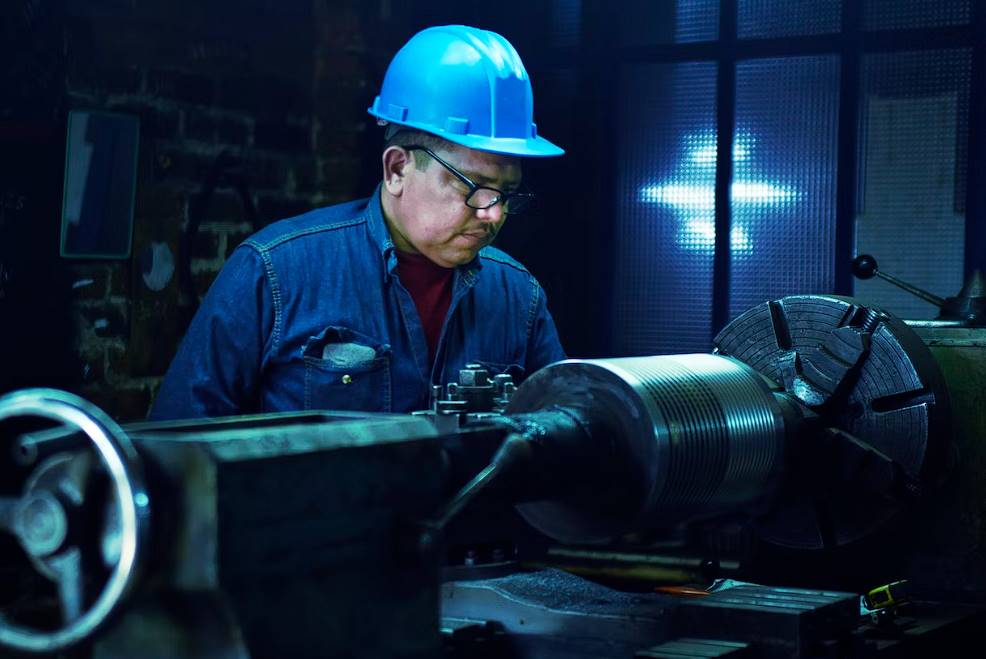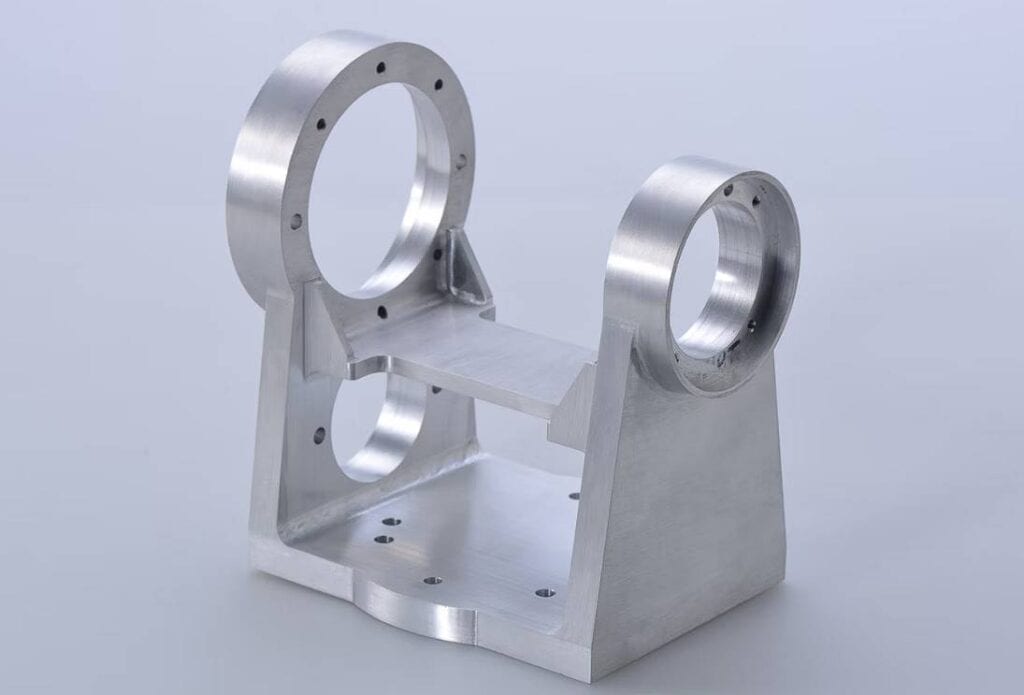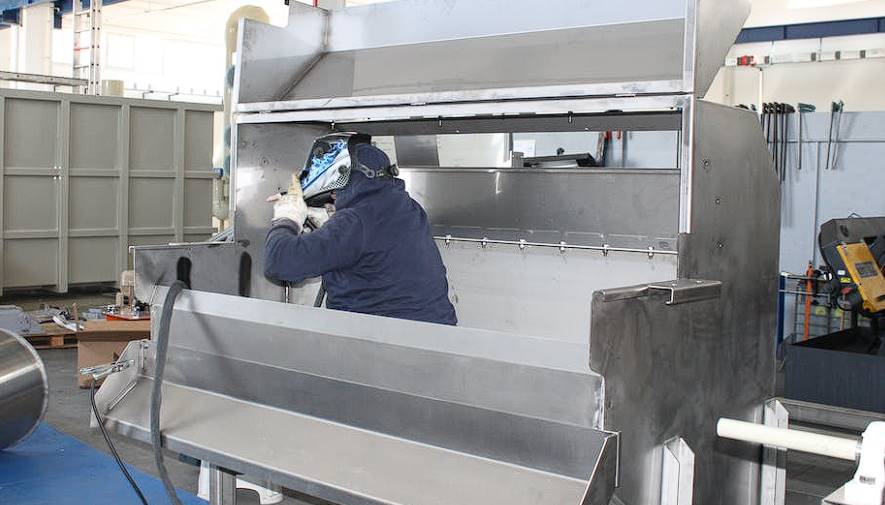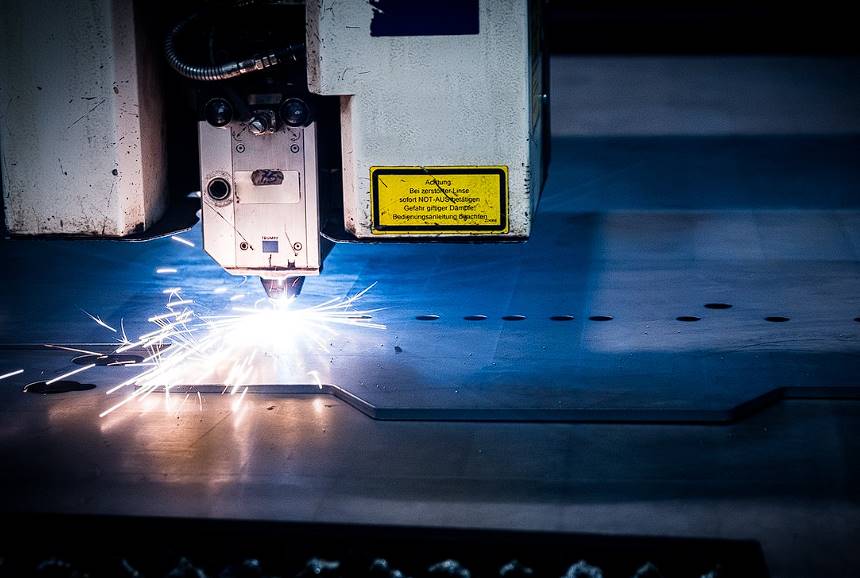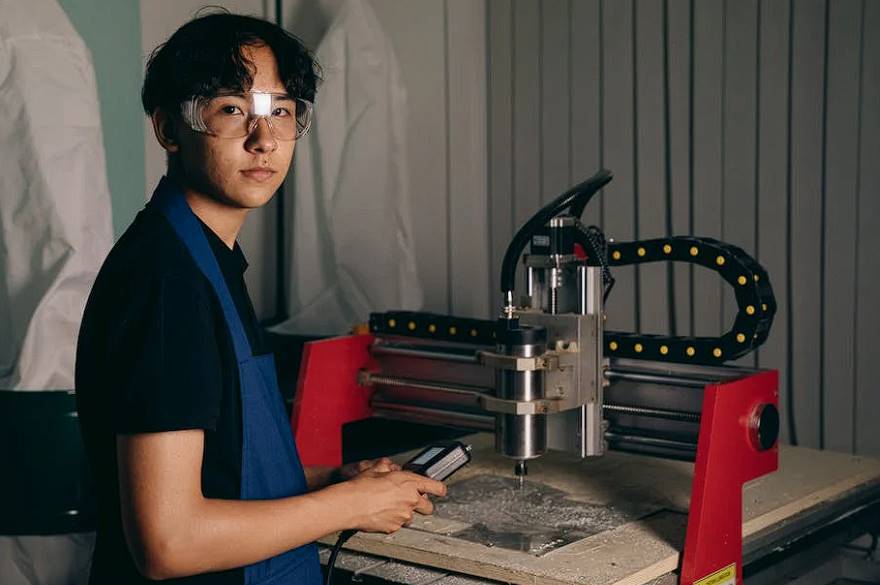Designing for custom metal fabrication is the first creative step in bringing an idea to life. In fact, the entire manufacturing process is based on the design, and the success of the project depends on the design in response to a demand or an idea for a product. Since the design is the blueprint for the fabrication process, optimising it is not only the most reliable technique to get the intended results but also crucial to the success of the project.
The processes and methods used to create a high-quality product can be enhanced through design optimisation. It improves the product by making it more efficient, streamlined, and inexpensive.
Here are some suggestions to help you create a design for custom metal fabrication that works better and faster.
What Is Custom Metal Fabrication?
Making metal components, goods, and parts to order means designing, engineering, and producing them to exacting standards. This procedure is usually needed when a product lacks a particular feature currently on the market.
Metal components are cut, welded, bent, formed, and assembled in various ways during fabrication. That's why you can get just about anything made out of metal with the help of bespoke metal fabrication, from components for machines to structural elements to decorative metalwork.
Designing and developing the product, selecting the metal materials, cutting and shaping the metal, welding or putting the components together, and finally finishing the product are all processes in the custom metalwork process.

Why Is Custom Metal Fabrication Necessary?
Custom metal fabrication should be considered for a number of reasons. The following are some of the long-term advantages of custom metal fabrications:
Innovation And Exclusivity
Creating a one-of-a-kind metal product through a custom metal fabrication technique requires a high level of ingenuity and originality. The fact that any wild concept for a design can be realised through this method is even more thrilling.
Resourceful
Custom metal fabrication is essential for many jobs because it enables the production of metal components that are not commercially accessible in the desired size, shape, and configuration. For instance, special hinges for bespoke doors can't be bought off the shelf and must be made to order.
Increased Strength And Durability
Custom-made aspects of a product that are created in response to the specifics of a given undertaking tend to last far longer than their off-the-shelf counterparts. Hence, the durability of the final product is improved through custom metal fabrication.
Precise Accuracy And High Quality
With custom metal fabrication, you can rest assured that the finished product will be both intricate and flawless. In order to attain the precise tolerances and specifications needed for bespoke metal fabrication, it is often necessary to hire expert fabricators, especially for complex and labor-intensive projects.
Time And Cost-Efficient
Custom metal fabrication offers numerous cost- and time-saving benefits for any construction project. The time and money spent on finding and identifying the appropriate metal pieces for a project can be reduced by using this method. Errors are avoided, too, which would necessitate more editing down the line. The final product from custom metal fabrication is made to fit your specific needs.
Tips To Optimise Your Custom Metal Fabrication Design
Choose The Best Custom Fabrication Company
The first piece of advice is to take your time and pick a reputable custom fabrication firm. Choosing the right materials can greatly affect the final product's look and feel. That being said, it is critical to understand where metal fabrication businesses acquire the materials they employ in their production processes.
Typically, they will negotiate a price with you once you have had a chance to look over the various metals they can supply you with after purchasing them directly from their reliable metal suppliers, who bring a wide range of options and advantages.
This includes the availability of their time, energy, and expertise. Quality work can be recognised by its experience and attentiveness to the client. It would be best if you also were on the lookout for the ability to supply expert engineers who can offer valuable suggestions for your initiatives.
If you want confidence and trust in the final result, selecting the proper company should be your top priority.
Choose High-Quality Materials
The resources you invest in will determine your final product's efficiency, durability, and effectiveness. Metal fabricators often have strong opinions about which types of raw materials are best for a certain job.
While it is beneficial to do your own research, it is far more practical to approach your fabrication business for guidance, as they will be able to tailor their recommendations to your specific needs and preferences and help you manage your production costs and schedule.
So, it is essential that you not rely just on your knowledge but instead take into account professional insights supported by sufficient skill-set experiences.
Get Your Fabricator Involved As Soon As Possible.
The earlier you involve the fabricator, the more likely it is that all of your plans will be realisable. Unrealistic or sub-optimal designs will necessitate additional time and resources to fix. If you involve your fabricator early on, they can offer advice and tweaks to make your design suitable for fabrication.
Experience
To get the most out of your metal fabrication design, it may be best to work with a reputable custom fabrication company.
Fabrication shops with experience in comparable projects can advise you on how to improve your design, from choosing the best material for your application to the best methods of fabrication. Working with a skilled fabricator allows you to gain insight, feedback, and recommendations on all aspects of the design process.
Edit And Simplify
Having identified and labelled the most important parts of your drawings, simplification is the next best step in optimising your design for bespoke metal production. You may be already down to the bare bones of your design. However, before sending your ideas to the fabricator, you should look closer if you still need to try an editing phase.
Examine your design to find anything different from its intended purpose. Do these purely aesthetic features need to be there? Another option is to search for duplicate information. If, for instance, your metal-fabricated component can be fastened with just one screw without compromising its fit or performance, then using two screws could be wasteful.
Overdetailed or overdone external features may also attract your attention. Cutting and stamping processes can be made easier with straight angles, but curved corners add complexity without benefit.
Improve Your Metal Design
Think about how you can streamline your design. To get the most out of your custom metal fabrication design, you need to first isolate the parts that are most important to you and then get rid of the parts that are unnecessary or redundant.
Check to determine if there are ways to streamline unnecessarily complicated or intricate parts. Talk to your fabricator if you need help figuring out how to streamline the fabrication process since they may have suggestions for you based on their experience.
Remove Unnecessary Details
It would be best if you were as specific as possible while designing, but avoid including information that isn't essential. If your fabricator needs help to understand your design, manufacturing will be delayed, and you will incur additional costs. If you want to know which design aspects are vital and which aren't, you should talk to a fabricator.
Be Thorough
Your custom metal fabrication design is, in many ways, a blueprint for your final product. Your fabricator must fully grasp your project specifications and objectives for optimal planning. If you can be specific about what needs to be made, the transition from design to fabrication will be faster, cheaper, and smoother.
Submitting an engineering and shop-ready design will help you stay on track, within budget, and free of costly revisions and mistakes well into the project. This includes technical specifications, your project liaison and coordinator, plans and profiles, the timeline for completion, and any other relevant information.
Working Together With Your Fabricator
It can be challenging to simplify or optimise your design without knowing the appropriate fabrication process. Metal fabrication encompasses a wide range of techniques, from cutting and welding to machining, stamping, and casting. Furthermore, many methods and strategies are used in various procedures. Modifying your design could greatly reduce the complexity of the manufacturing procedure. But, if you need to be made aware of these fabrication techniques, knowing exactly how to do this can be challenging.
Once you have carefully studied the functional and aesthetic components of your design and established the necessary measurements, you should speak with a competent fabricator about optimising the fabrication process. Professional fabricators can speed up your job using the most effective methods by making minor alterations to your design.
Examine The Metal Choices You Have Available
Different metal alloys have different corrosion, heat, and stress resistance properties to meet a wide range of needs. Very long-lasting metals that can endure high heat, high pressure, and chemical corrosion are often required, although they tend to be more expensive and difficult to deal with. Standard alloys will do just well in other contexts, where they won't be subjected to harsh circumstances.
Choosing the right metal alloy can greatly minimise fabrication time and expenses associated with making metals to precise specifications. It would be best if you thought about the following to do this with your custom metalwork project:
- Applied Force: Will your product endure constant bending, strong impacts, heavyweight, abrasion, and other similar conditions?
- Corrosive materials: Is it possible to touch air, water, and acids?
- Temperature Exposure: Will persistent exposure to intense heat, cold, and considerable temperature swings exist?
- A lifetime of Use: Materials will depend on product lifespan and use conditions.
Fabricator Of Metal Should Be Included In The Previous Process
Remember to include your metal fabricator from the beginning. Doing so paves the way for honest input on potential changes to your design's viability and dependable feedback that will help you optimise your design early on.
It might be too late if you don't. No one wants to pay to revise their well-crafted plan because it wasn't practical. Thus, consult your metal fabricator early on in the design process.
Don't Make The Design Too Complicated
A well-thought-out plan is essential for any endeavour to produce a well-received design by its audience. Yet, remember that the secret is keeping things as easy as possible. Simplifying the design of your custom metal fabrication is the next best step after identifying and marking the important components of your drawings. Even if you've eliminated all unnecessary elements from your drawings, you should take another look at them before sending them to the fabricator.
Find the parts of your design that aren't contributing anything useful, then get rid of them. Is there a must-have feature for bespoke metal fabrication parts primarily for aesthetics rather than function? Strive perpetually to cut down on redundant actions. Does it, for instance, function perfectly with only one screw installed? If so, you shouldn't throw another bolt for aesthetics. Cutting costs is more important in the long run.
The corner can also be rounded if that's what you like. Therefore, cutting the metal at a straight angle is just as efficient and should be selected instead. Even if it improved the overall appearance of the custom metal fabrication, it would not raise the value of the result.

Think About Your Finishing Choices
The quality of the materials you use is only one factor in making sure your fabricated item turns out as planned. Your project's durability and longevity can be improved with the correct finishing method, such as powder coating, anodising, metal plating, galvanising, and more. You can achieve your project's desired colour scheme, texture, or sheen by using one of these finishing methods.
Test Prior To The Process Of Fabrication
You must always be sure your brilliant idea will succeed in the real world. It's only sometimes possible to tell whether a design will be successful at any stage of the process, from the initial sketch through the implementation.
The final advice is to conduct rigorous quality assurance on all bespoke metal fabrication projects before final assembly.
Metal fabricators employ 3D models, prototypes, and other tools to ensure that their designs can be produced. Examinations are essential. These are evidence of the customers' and engineers' abilities to complete the project.
Conclusion
Creating a custom metal fabrication plan is an important part of bringing an idea to life. Process of designing, engineering, and manufacturing metal components, items, and parts to strict specifications; used when existing products lack a desired feature. Long-term benefits of custom metal fabrication include novelty, uniqueness, resourcefulness, toughness, longevity, correctness, quality, efficiency, economy of time and money, and absence of errors.
Choosing the best custom fabrication firm, high-quality materials, and early involvement from your fabricator will all help your custom metal fabrication design succeed. They can provide feedback and modifications to help your design be ready for manufacturing. If you want to maximise the effectiveness of your design, consulting with a professional custom fabrication firm is essential.
Reduce complexity by removing features that aren't essential to the design's core function. Examine the design for redundancies, such as information or external features that are too detailed or complex, and strip away extraneous elements to make room for the essentials. If you're having trouble finding ways to speed up the fabrication process, it's a good idea to consult with your fabricator.
Designing anything well is the first creative step towards making it real, so give it your whole attention. To guarantee the success of your project and save excessive costs and delays, you should zero in on the most crucial aspects and ditch the rest. A well-defined design for custom metal fabrication is as important as the metal itself since it acts as a blueprint for the finished result. To guarantee a smooth transition from design to fabrication, a fabricator must be familiar with the project's requirements and goals. Providing a design that is both engineering and shop-ready minimises disruptions to the schedule and the budget. Due to the complexity and variety of processes involved in metal fabrication, such as cutting, welding, machining, stamping, and casting, it is often beneficial to work with a skilled fabricator.
The fabrication time and cost can be drastically cut by selecting the appropriate metal alloy. When making your material choice, keep in mind things like expected use, durability, longevity, and resistance to force, corrosion, and extreme temperatures. Get in touch with a metal fabricator early on in the design process to get some candid criticism and suggestions.
The key to making a design that is well liked is to keep it simple. Get rid of the fluff and concentrate on making things work rather than looking pretty. To make a project last as long as possible, it is important to eliminate unnecessary steps and pick a high-quality finishing process, such as powder coating, anodising, metal plating, or galvanising.
To ensure the design will work in practice, it must be tested before it is built. To assure the success of a project, metal fabricators employ 3D models and prototypes. In order to determine if the client and the engineer are up to the task at hand, it is necessary to administer tests.
Content Summary
- Custom metal fabrication design is the first creative step in bringing an idea to life.
- The entire manufacturing process depends on the design's success and response to the demand or idea for a product.
- Design optimisation is crucial for improving efficiency, streamlining, and cost-effectiveness in metal fabrication.
- Custom metal fabrication involves designing, engineering, and producing metal components to exacting standards.
- Custom metal fabrication is necessary for innovation, exclusivity, and resourceful production.
- Custom-made metal components tend to have increased strength, durability, accuracy, and quality.
- Custom metal fabrication offers time and cost-efficient benefits for construction projects.
- Choosing the right custom fabrication company is essential for material selection and quality work.
- Working with an experienced fabricator allows for expert insights and recommendations.
- Simplifying and streamlining the design can optimise custom metal fabrication.
- Involving the fabricator early ensures realistic and achievable design plans.
- Collaboration with the fabricator helps optimise the fabrication process.
- Carefully examining metal choices is essential for meeting specific project needs.
- Including the fabricator in the process early on helps avoid costly revisions later.
- Avoid making the design too complicated to reduce costs and improve efficiency.
- Consider finishing choices like powder coating or galvanising for durability and aesthetics.
- Testing the design before fabrication ensures its feasibility and success in the real world.
- Rigorous quality assurance is crucial for bespoke metal fabrication projects.
- Metal fabrication processes involve cutting, welding, bending, and forming metal components.
- Custom metal fabrication is ideal for producing unique and specific products.
- Fabrication with precise tolerances and specifications requires expert fabricators.
- Time and money can be saved through proper material selection and design optimisation.
- Designing for custom metal fabrication should focus on functionality and essential features.
- Fabricators can provide valuable advice and recommendations for optimal metal fabrication.
- Involving fabricators early allows for adjustments and improvements to the design.
- Collaboration with fabricators helps understand the best fabrication techniques.
- Metal alloy selection depends on factors like applied force, corrosive materials, temperature exposure, and product lifespan.
- Proper finishing methods can enhance the durability and appearance of the final product.
- Rigorous testing and quality assurance ensure the success of the metal fabrication project.
- Fabricators use 3D models and prototypes to ensure the feasibility of the design.
- Custom metal fabrication involves selecting appropriate materials, cutting, shaping, welding, and assembling.
- Custom metal fabrication allows for the creation of products not commercially available.
- Custom-made metal components offer increased longevity and quality.
- Fabricators with experience can provide valuable advice and recommendations.
- Simplicity in design can improve efficiency and reduce costs.
- Collaborating with fabricators helps optimise the fabrication process.
- Careful examination of available metal choices is essential for project success.
- Collaboration with fabricators from the beginning ensures a viable and dependable design.
- Streamlining the design and removing unnecessary details improves efficiency.
- Finishing choices like powder coating and metal plating enhance the project's appearance and durability.
- Thorough testing and quality assurance ensure the design's feasibility and success.
- Fabricators use 3D models and prototypes to validate the design before fabrication.
- Design optimisation is crucial for achieving the desired results in custom metal fabrication.
- Custom metal fabrication allows for innovative and exclusive product creation.
- Choosing high-quality materials ensures a durable and effective final product.
- Collaborating with fabricators helps optimise the fabrication process and reduce errors.
- Streamlining the design and removing unnecessary elements saves time and resources.
- Thorough testing and quality assurance guarantee the success of the metal fabrication project.
- Proper material selection and finishing methods improve the product's longevity and appearance.
- Custom metal fabrication offers numerous long-term advantages, including innovation and resourcefulness.
Frequently Asked Questions
Rapid prototyping allows you to create physical prototypes quickly and cost-effectively. You can identify potential design improvements and validate the product's feasibility before full-scale production by evaluating these prototypes. This iterative approach reduces development time, minimises risks, and produces higher-quality end products.
Design for manufacturability involves creating product designs that are easy to manufacture, assemble, and produce. Considering manufacturability during the design phase, you can streamline the fabrication process, reduce production costs, and enhance overall efficiency. It also helps in minimising material waste and ensures a smoother production flow.
Quality control is a critical aspect of custom metal fabrication. It involves conducting in-process quality checks at various stages of fabrication to identify and address any issues early on. A final inspection and testing process is conducted to ensure the end product meets the required quality standards and adheres to the client's specifications.
To enhance aesthetics, consider incorporating unique design elements that set your product apart. Also, choose suitable surface finishing techniques that enhance the appearance and provide protection against corrosion and wear.
Building long-term client relationships involves meeting and exceeding client expectations consistently. Provide exceptional customer service, deliver high-quality products, and offer after-sales support to ensure client satisfaction and loyalty.

